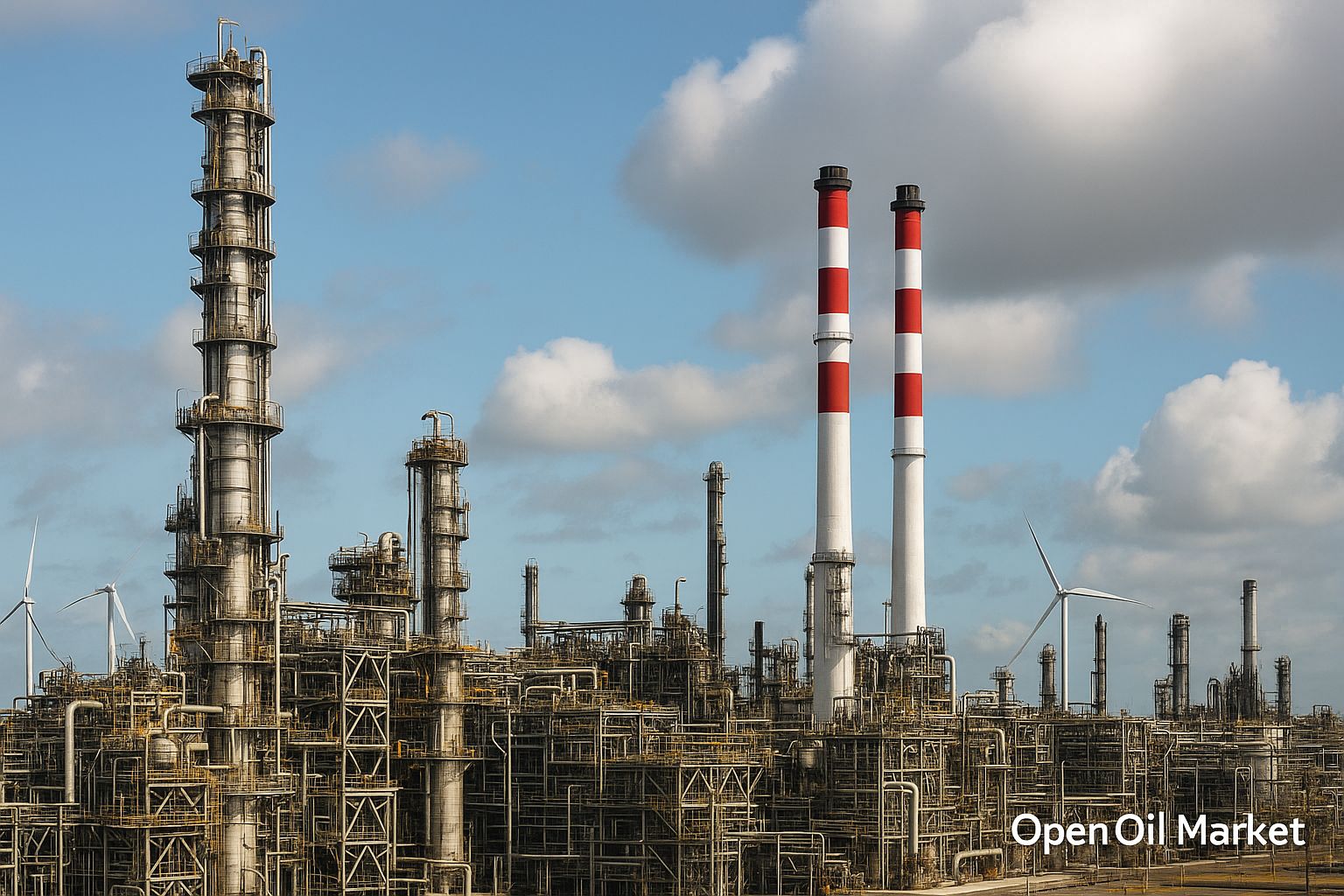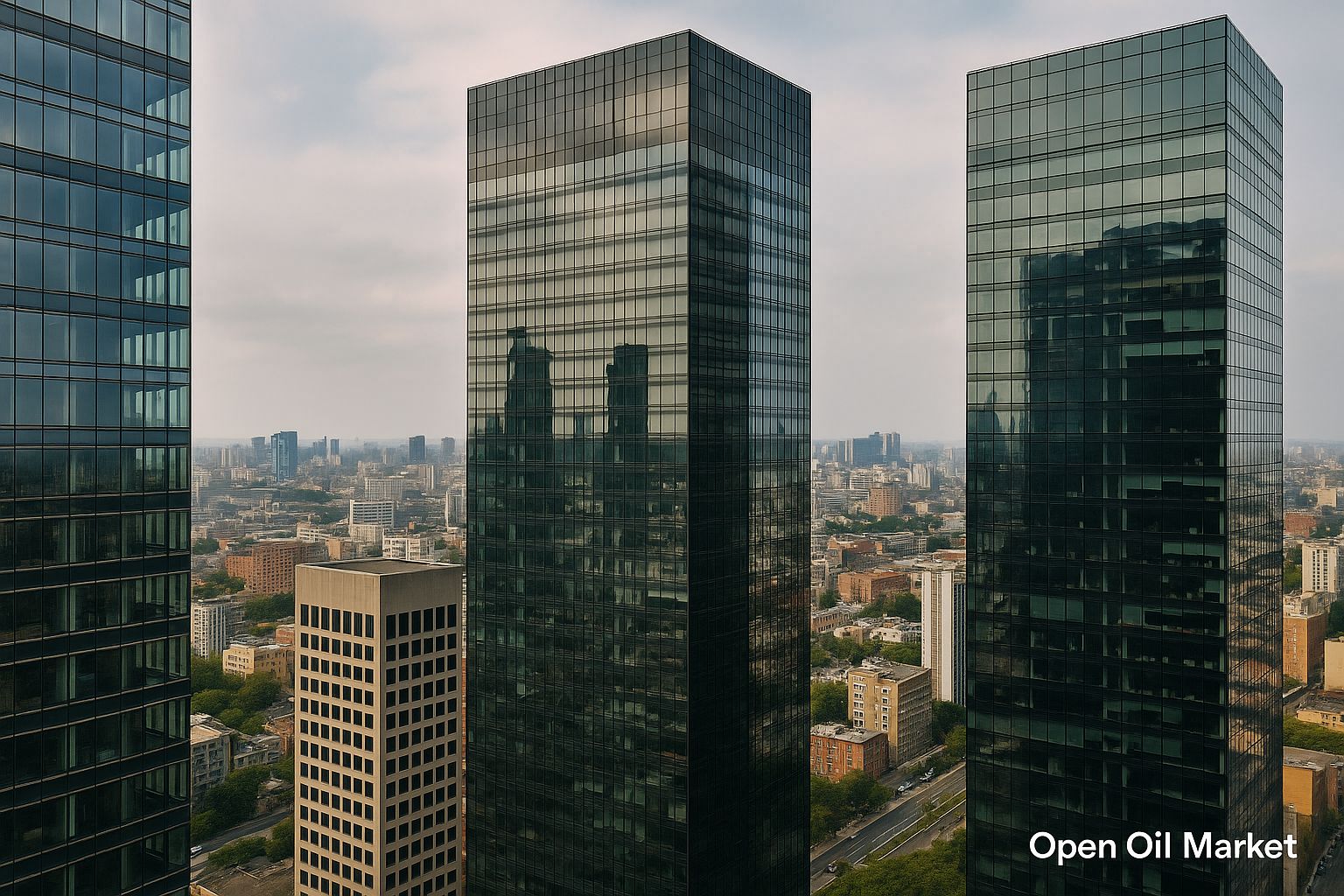The Global Venture Market is Reviving: Major AI Deals, New IPOs, Growth of Venture Hubs, and Investor Activation in the US, Europe, and Asia. A Detailed Overview of Trends as of November 5, 2025.
As of early November 2025, the global venture market is confidently recovering after a prolonged downturn in recent years. Investors worldwide are once again actively funding technology startups—record deals are being struck, and company IPO plans are again taking center stage. Major players are returning to the market with significant investments, governments are increasing support for innovation, and private venture capital is once again flowing into the startup ecosystem.
Venture activity is rising across all regions. The United States continues to lead (particularly in the field of artificial intelligence, which accounts for the lion's share of new investments), but other parts of the world are gaining momentum. In the Middle East, the volume of investments has nearly doubled over the past year, with sovereign funds supporting the creation of local tech hubs. Europe is demonstrating stability: Germany has overtaken the UK for the first time in the number of venture deals, and early-stage financing is particularly vibrant there. In Asia, the picture is mixed: China is showing signs of recovery after a weak period, although its activity still lags behind the peaks of 2021–2022; at the same time, India and Southeast Asia are attracting record capital amid a relative decline in China. The startup ecosystems of Russia and other CIS countries are also striving to keep pace despite external constraints. A new venture wave is forming, although investors are still acting selectively and cautiously.
Below are the key events and trends shaping the venture market agenda as of November 5, 2025:
- Capital inflow and the return of mega-deals. Leading venture funds are raising record amounts, and major investors are once again actively investing, saturating the market with capital and rekindling risk appetite.
- Extraordinary growth in AI investments and a new wave of "unicorns." Exceptionally large funding rounds are pushing startup valuations to new heights, primarily in the artificial intelligence sector, giving rise to a plethora of new "unicorns."
- The return of the IPO market. Successful public offerings by tech companies confirm that the long-awaited "window" for exits has reopened, restoring liquidity to the venture market.
- Expansion of industry focus. Venture capital is flowing not only into AI but also into fintech, climate and "green" projects, biotechnology, defense developments, and even revived crypto startups.
- A wave of consolidation: mergers and acquisitions (M&A). Renewed M&A activity is reshaping the industry landscape, creating exit opportunities and accelerating growth for the strongest players.
- Regional growth: new venture hubs. The Middle East, Southeast Asia, Latin America, and other regions are strengthening their positions on the global venture map, attracting record capital amid a slowdown in China.
- Russia and the CIS: local initiatives. Despite restrictions, new funds and support programs for startups are being launched in the region aimed at developing local ecosystems and attracting investor attention.
The Return of Mega Funds: Big Money Back in the Market
The largest investment players are triumphantly returning to the venture arena, signaling a new round of risk appetite. The Japanese conglomerate SoftBank, for example, is establishing a new fund, Vision Fund III, with a volume of approximately $40 billion, focused on advanced technologies. Sovereign funds from the Gulf states have also become more active: they are pouring billions into technology projects and launching state mega-programs to support startups, thereby forming their own tech hubs in the Middle East. At the same time, dozens of new venture funds are being created worldwide, attracting significant institutional capital to invest in high-tech sectors.
Renowned Silicon Valley venture firms are also increasing their presence. They have amassed record reserves of uninvested capital ("dry powder")—hundreds of billions of dollars ready to be deployed as market confidence returns. The influx of such "big money" is filling the startup market with liquidity, providing resources for new funding rounds and supporting the growth of promising company valuations. The return of mega funds and large investors intensifies competition for the best deals but simultaneously reassures that capital inflows into the market will continue.
Record Investments in AI: A New Wave of "Unicorns"
The field of artificial intelligence is the main driver of the current venture upturn, demonstrating unprecedented funding volumes. Investors are eager to stake their claim among the leaders in the AI market, directing colossal resources into the most promising projects. Just in recent weeks, several mega-rounds have been announced: American startup Crusoe (infrastructure for AI data centers) raised approximately $1.4 billion at a valuation of around $10 billion; significant investments have also been secured by foundational AI model developers such as Anthropic (approximately $13 billion raised) and xAI (around $5.3 billion). Such deals are soaring to unprecedented heights, underscoring the excitement surrounding AI startups and spawning a new wave of "unicorn" companies. According to market estimates, almost half of all venture investments worldwide in the third quarter of 2025 were directed toward AI companies.
Moreover, venture capital is not only flowing into applied AI products but also into the infrastructure for them—the market is ready to finance even the "picks and shovels" for the new technological gold rush. Experts warn of the risk of overheating in certain projects, but investor appetite for AI startups remains unabated.
The IPO Market Awakens: An Opportunity Window for Exits
The global market for initial public offerings is emerging from a prolonged lull and regaining momentum. In Asia, Hong Kong has kicked off a new wave of IPOs: in recent months, several major technology companies have successfully gone public, collectively raising billions of dollars. The situation is also improving in the US and Europe: a number of highly valued startups (including fintech giant Chime and design platform Figma) have made successful debuts on the stock market, demonstrating strong demand from investors and steady growth in stock prices. By the end of 2025, other "unicorns" are preparing for public offerings, with highly anticipated IPOs including the payment service Stripe and several major tech companies.
Even the crypto industry is trying to capitalize on the revival: fintech company Circle successfully conducted an IPO in the summer (its shares rose significantly afterward), and crypto exchange Bullish has applied for listing in the US with a target valuation of around $4 billion. The return of IPO market activity is crucial for the venture ecosystem: successful public exits allow funds to realize profitable exits and direct freed-up capital into new projects, sustaining further growth in the industry.
Expanding Industry Focus: Not Just AI
Venture investments in 2025 are embracing a much wider range of sectors and are no longer constrained to just the AI boom. Revitalization is evident in the fintech sector (large funding rounds worldwide), in climate and agritech (demand for "green" innovations), in biotech and medtech (new developments are once again securing capital), in defense projects (demand for dual-use technologies), and even in crypto startups (after market stabilization, select projects are once again attracting investments). This broad focus makes the startup ecosystem more resilient and reduces risks of overheating in specific segments.
Consolidation and M&A: Consolidating Players
Inflated startup valuations and fierce competition for markets are provoking a wave of consolidation. Major mergers and acquisitions (M&A) deals are back in the spotlight, consolidating key players and reshaping the landscape of the tech sector. After a lull in previous years, corporate giants and "unicorns" with solid reserves of capital are activating acquisitions of promising projects to strengthen their positions and gain access to new technologies.
In the third quarter of 2025, the volume of global M&A deals involving venture companies reached its highest level in recent years: nine startups were acquired for over $1 billion each. Among the most significant was Google’s acquisition of the Israeli cybersecurity startup Wiz for about $32 billion (the largest exit in the history of Israeli high-tech). Such mega-deals illustrate corporations' desire to acquire cutting-edge technologies and teams. The wave of mergers provides investors with much-needed liquidity and allows successful players to scale their businesses, although the total number of independent startups is decreasing. The resurgence of M&A indicates market maturation: mature projects are either merging with one another or becoming acquisition targets for corporations, while venture funds are gaining the long-awaited profitable exits.
Regional Growth: New Venture Hubs
Venture activity is becoming increasingly global—new regional centers of innovation are emerging. The Middle East is currently one of the most dynamic markets: Gulf countries, which previously invested mainly abroad, are actively developing their ecosystems. Tech parks and funds to support local startups are being launched, leading to record deals where individual projects attract financing in the hundreds of millions of dollars. Simultaneously, activity in Asia outside of China is reviving. Southeast Asia (led by Singapore) has tripled its venture investments over the year thanks to several large funding rounds. India has slightly slowed its pace but maintains a high level of funding, while South Korea and Japan have seen hefty investments in semiconductor and robotics startups. Israel remains a hub of innovation, although activity there is slightly below the peaks of 2021.
Europe, while lagging behind the US in investment volume, is demonstrating resilience and gradual growth. Venture financing for European startups has increased at double-digit rates, particularly active in early-stage deals. The geography of large funding rounds is expanding: beyond London and Berlin, investors are increasingly finding promising projects in Paris, Stockholm, Tel Aviv, and other tech clusters. Several significant M&A deals in Europe have confirmed the maturity of local players. Latin America is also reviving: for example, in Brazil, venture investments surged nearly 50% over the summer, once again positioning this country at the forefront of the region. Thus, the global venture map continues to expand—capital is increasingly flowing to new destinations in search of talented teams and promising ideas.
Russia and the CIS: Local Initiatives
Despite external constraints, there is a resurgence of startup activity in Russia and neighboring countries. The Russian venture market has begun to emerge from stagnation: the volume of investments in the first half of 2025 nearly doubled (to about $87 million), the number of active investors has increased, and new funds of around 10 billion rubles each have been launched. Private and state players are filling the void left by foreign funds: domestic venture funds are being formed, and large corporations are launching accelerators and support programs for technology projects. Similar processes are occurring in Kazakhstan, Uzbekistan, and other countries in the region. These initiatives inspire cautious optimism, although the scale of the CIS venture market still lags behind world leaders.
Cautious Optimism
The venture market is closing 2025 on an upswing, but growth is occurring more thoughtfully than in past booms. Investors are placing more emphasis on the quality of projects and the sustainability of business models, avoiding excessive risk. It is expected that in 2026, venture investments will continue to grow at a moderate pace, and the startup ecosystem will develop more balanced and rationally.




